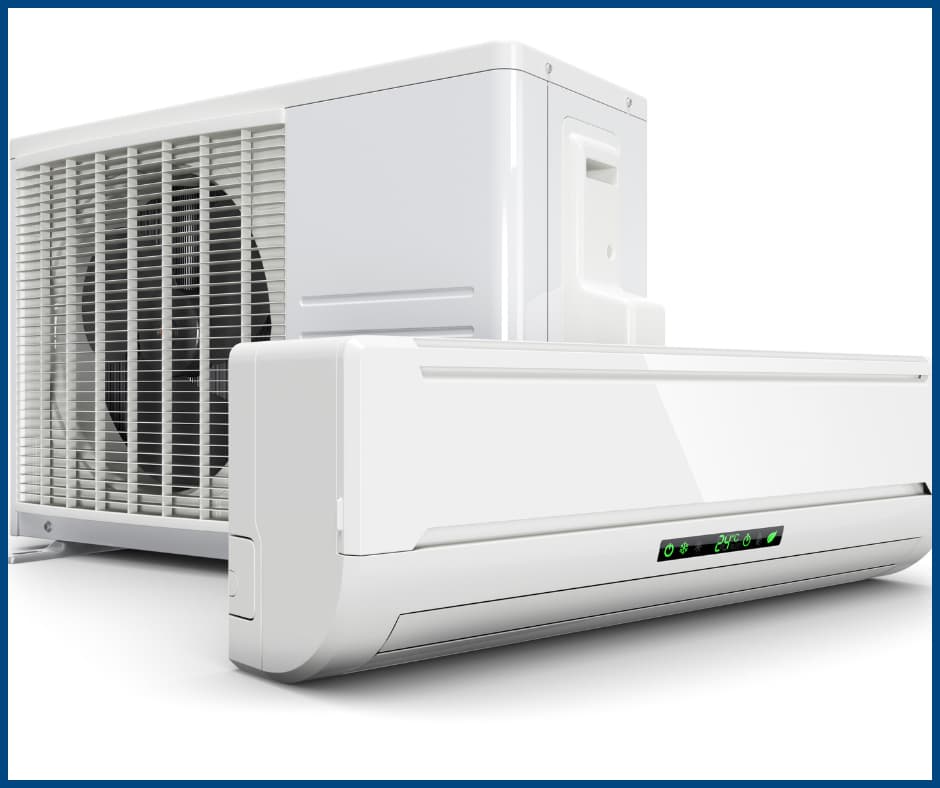When it comes to heating and cooling your home, choosing the right system can make a big difference in comfort, efficiency, and cost. Two of the most common options are mini-splits vs. traditional HVAC systems. Each has its own advantages and drawbacks, so how do you decide which is best for your home?
What Is a Mini-Split System?

A mini-split system, also known as a ductless system, consists of an outdoor compressor unit and one or more indoor air-handling units. These units are connected by a small conduit, eliminating the need for ductwork.
Pros of Mini-Splits:
- Energy Efficiency – Mini-splits are known for their high efficiency, as they don’t suffer from the energy loss associated with ductwork.
- Zoned Heating & Cooling – Each indoor unit can be controlled separately, allowing for personalized temperature settings in different rooms.
- Easy Installation – Since no ducts are required, mini-splits can be installed in places where traditional HVAC systems may not be feasible.
- Quiet Operation – Mini-split systems tend to be quieter than traditional HVAC units.
Cons of Mini-Splits:
- Higher Upfront Cost – The initial installation cost can be more expensive, especially for larger homes requiring multiple indoor units.
- Aesthetic Concerns – Indoor units are mounted on walls, which some homeowners may find less appealing than hidden ductwork.
- Regular Maintenance – The filters in mini-split systems need frequent cleaning to maintain efficiency.
What Is a Traditional HVAC System?
A traditional HVAC system typically consists of a central heating and cooling unit that distributes air through a network of ducts. These systems include central air conditioners, furnaces, and heat pumps.
Pros of Traditional HVAC Systems:
- Whole-Home Comfort – A single system can efficiently heat and cool an entire home.
- Lower Initial Cost – If ductwork is already in place, installing a traditional system is often more affordable.
- Hidden Components – Unlike mini-splits, traditional HVAC systems keep air handlers out of sight, preserving interior aesthetics.
Cons of Traditional HVAC Systems:
- Ductwork Maintenance – Air ducts require regular cleaning and maintenance to prevent efficiency losses and air quality issues.
- Energy Loss – Heat and cooling loss through ductwork can reduce overall system efficiency.
- Less Flexibility – Unlike mini-splits, traditional systems don’t offer zoned heating and cooling without additional modifications.
Which System Is Best for Your Home?
- If you have an older home without existing ductwork – A mini-split system may be the best option to avoid costly duct installation.
- If you want customized temperature control – Mini-splits offer zoned comfort, making them ideal for homes where different rooms require different temperatures.
- If you’re replacing an existing system with ductwork – A traditional HVAC system might be the more cost-effective choice.
- If energy efficiency is a priority – Mini-splits tend to be more efficient, especially in homes where ductwork could lead to heat loss.
Final Thoughts
Both mini-splits vs. traditional HVAC systems have their place in modern homes. The right choice depends on your home’s layout, budget, and comfort preferences. If you’re considering an upgrade or new installation, consulting with a professional can help determine the best fit for your needs.
Looking for more home comfort insights? Visit AmeriSpec Inspection Services to explore how we help homeowners make informed decisions about their homes.
